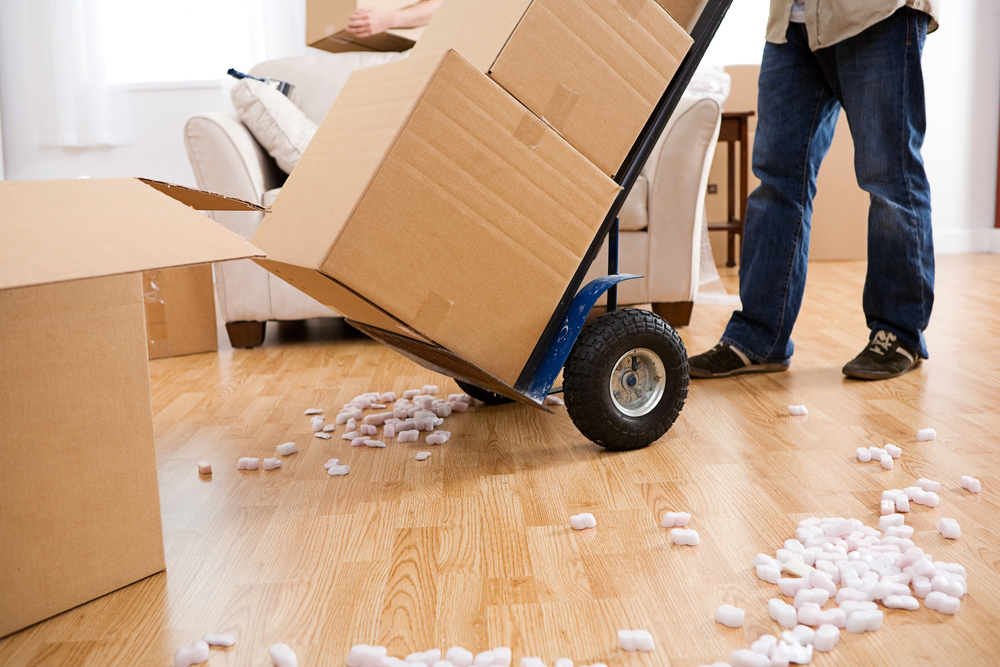Blog
Top 10 Residential Moving Tips for a Hassle-Free Move
Residential moving can be an exciting adventure, but it can also be stressful and overwhelming. There is so much to consider, pack, and move, and it can be tough to know where to start. If you’re planning a residential move, you’re not alone, but there are some ways to make the process easier. In this post, we’ll share our top 10 tips for a hassle-free residential move.

1. Plan ahead
Residential moving requires proper planning. Take the time to organize and plan your move so that you’re not rushing around last minute. Start by creating a moving checklist and timeline to ensure everything stays on track. Set a budget, decide on a moving date, and book a reputable moving company. The earlier you start planning, the less stressful your move will be.
2. Downsize your belongings
Before you start packing, assess your belongings and determine what you can eliminate. By reducing the number of items you need to move, you’ll save time, effort, and money. Consider selling or donating items you no longer need or use. Downsizing can be tough, but it’s worth it to simplify your move.
3. Use high-quality packing materials
Using high-quality packing materials can save you from potential damages to your belongings. Invest in sturdy boxes, bubble wrap, packing tape, and labels. Label boxes by room and contents to help with the unpacking process. If you’re unsure about how to pack certain items, ask your moving company for advice.
4. Pack room by room
Packing room by room is an efficient way to stay organized. Start with the least used rooms and items, such as the attic, garage, and storage rooms. As you pack, declutter as much as possible. Keep like items together, and clearly label each box.
5. Protect fragile items
Protect fragile items by wrapping them in bubble wrap, packing paper or towels, and labeling boxes as “fragile.” Don’t stack heavy items on top of delicate ones, and take extra measures for artwork and electronics. Use padded blankets to protect larger items such as furniture.
6. Keep important documents in a safe place
Keep important documents such as passports, birth certificates, and moving paperwork in a safe and easily accessible place. Consider carrying them with you instead of putting them in the moving truck.
7. Label boxes carefully
Be specific when labeling boxes, especially when it comes to heavy or fragile items. Include information such as what room the box should go in and the contents of the box. Labeling your boxes accurately can make the unpacking process much smoother.
8. Confirm the delivery address
Ensure that your moving company has the correct delivery address to avoid any confusion on moving day. Provide clear directions if necessary, particularly if you’re moving to a new construction or remote area.
9. Prepare your new home
Before you move in, prepare your new home. Clean and disinfect the space, change the locks, set up any necessary utilities, and ensure that everything is in working order. With a clean, prepared space, you can unpack and settle in more efficiently.
10. Take care of yourself
Residential moving can be physically and emotionally exhausting. Remember to take care of yourself during the process. Get enough rest, stay hydrated, and take breaks when necessary. Ask for help from friends and family to help ease the burden and stress.
Residential moving can be challenging, but with proper planning and preparation, it doesn’t have to be. Follow these top 10 tips to ensure a smooth and stress-free move. Remember to keep communication open with your moving company, stay organized and take care of yourself. Good luck on your move!
Moving Safety Guide: How to Keep Yourself and Your Belongings Secure During a Move
Moving to a new home can be an exciting experience, but it can also be a stressful and challenging one, which requires good planning,moving safety skills, organizational skills, and patience. One of the most critical aspects of making a move is ensuring moving safety for yourself and your belongings. Moving safety involves precautions that you should take to prevent accidents, injuries, and damage to your furniture and other possessions while moving. In this post, we will provide you with a comprehensive moving safety guide that you can follow to make your move as safe and secure as possible.

1. Plan Ahead
Moving safety starts with good planning. The first step in planning for your residential move is to create a moving checklist that you can use to keep track of everything you need to do before and during your move. Your checklist should include items such as hiring a moving company, decluttering your home, packing your belongings, and notifying your utilities and other service providers of your address change.
2. Hire a Reputable Moving Company
To ensure moving safety, one of the essential things you need to do is to hire a reputable and reliable moving company. Look for a company that is licensed, insured, and has a good track record of providing quality moving services. Do some research and read reviews from past clients before making a final decision.
3. Get Adequate Insurance Coverage
Another critical aspect of moving safety is getting adequate insurance coverage for your belongings. Check with your moving company to see what type of insurance coverage they offer and consider purchasing additional insurance if necessary. This way, you can protect your belongings against damage or loss during transit.
4. Declutter Before You Pack
Before you start packing your belongings, take some time to declutter your home. Getting rid of items that you no longer need or use can help you save space and reduce the weight of your move, which can ultimately save you money. It can also help you avoid accidents or injuries caused by tripping over clutter or trying to move heavy items.
5. Pack Smart
Packing your belongings correctly is essential for moving safety. Start by using high-quality packing materials such as bubble wrap, packing paper, and sturdy boxes. Label all your boxes correctly and ensure that the contents of each box are well-protected and won’t shift during transit. When packing heavy items, ensure that they are packed at the bottom of the box and that lighter items are placed on top.
6. Use Proper Lifting Techniques
Lifting heavy items during a move can be challenging and dangerous. To avoid injuries, use proper lifting techniques such as bending your knees, keeping your back straight, and lifting with your legs. Avoid lifting with your back, which can lead to strains and muscle pulls.
7. Take Breaks
Moving can be a physically demanding task that requires a lot of energy and stamina. To ensure moving safety, take breaks regularly to rest and re-energize. Drink plenty of water and eat healthy snacks to keep yourself hydrated and nourished.
8. Secure Your Load
If you’re driving a rental truck or moving van, it’s essential to secure your load properly to prevent damage or accidents. Ensure that all your boxes and furniture are secured with straps or rope and that nothing is loose or moving around during transit.
9. Protect Your New Home
Finally, once you’ve arrived at your new home, take steps to protect your new environment, including your floors, walls, and doors. Use floor protectors to prevent scratches and scuffs, and cover your walls and doors with padding to prevent damage during the move-in process.
Moving safety is critical for protecting yourself and your belongings during a move. By following the tips outlined in this guide, you can ensure that your move is as safe and secure as possible. Remember to plan ahead, hire a reputable moving company, get adequate insurance coverage, declutter before you pack, pack smart, use proper lifting techniques, take breaks, secure your load, and protect your new home. With these precautions in place, you can enjoy a stress-free and successful move.
How to Choose the Best Moving Company: A Comprehensive Guide
Moving to a new place can bring a lot of excitement and promises for a better life. But the process of moving itself can be overwhelming and stressful. It requires packing, transporting, and unpacking your belongings, which can be time-consuming and exhausting. That’s why hiring a moving company can be a wise decision. But how do you choose the right one? In this guide, we’ll provide you with some tips to help you pick the best moving company for your needs.

1. Get Recommendations
One of the easiest ways to find a reliable moving company is to ask for recommendations from your family and friends. If they had a good experience with a particular company, chances are you will too. You can also ask your social media connections in local community groups for recommendations, and this can provide you with a diverse range of options.
2. Do Research Online
Another way to find a moving company is to research online. Check the websites of potential companies, read reviews, and see what former customers have to say. You can also check the Better Business Bureau (BBB) and the Federal Motor Carrier Safety Administration (FMCSA), which keep records of complaints against companies. See if you can get quotes from multiple companies, this will help you compare and pick the best one.
3. Check for Moving Licenses and Insurance
Before hiring a company, check if they have the necessary licenses and insurance. A moving company should have a state license number, which you can verify with the local authorities. Moving companies should also have liability insurance that covers damages to your belongings during the move. Ask the moving company to provide you with a Certificate of Insurance to verify their coverage.
4. Look for Experience and Reputation
The years of experience a company has and their reputation is essential when selecting the right moving company. A company with a good reputation will not hide any costs, provide reliable services and have transparent communication. Ensure the company has enough experience amid similar types of moves to you.
5. The Level of Professionalism
Professionalism within the moving industry is crucial. Settling for anything less could amount to trouble later down the line, as your items need to be moved with care and precision.The moving company you choose should be trusted to follow moving safety guidelines. Ensure each representative you talk to presents themselves with professionalism and is capable of providing detailed answers to all of your questions.
6. Check for Additional Services
Some companies offer additional services that can make moving more comfortable and hassle-free. These services can include packing, unpacking, disassembling/reassembling furniture, storage units, or moving heavy or bulky items like pianos. Make sure you choose a moving company that can accommodate all your requirements.
7. Know the Payment Terms and Conditions
It’s essential to know what the pricing structure of the company you’re considering. Cost can differ vastly between arrangements, so make sure there are no hidden costs. Moving companies may charge hourly, by weight, or by distance. This is something that should be outlined upfront. Additionally, check if the company requires a deposit ahead of time and if there are penalties for canceling or postponing the move.
8. Pay Attention to Red Flags
There’s a spectrum of common red flags in the moving industry that you should be aware of. Some of them include:
– The moving company asks for a large upfront payment.
– The company doesn’t have a local physical address.
– The moving company doesn’t have its logo on trucks.
– The company doesn’t have a website.
– The moving company doesn’t have any reviews or references online.
9. Trust Your Instincts
Lastly, listen to your intuition and choose a moving company that feels right for you. If something doesn’t seem right, don’t take the risk. Trust your instinct and go for a moving company that you feel comfortable working with.
Hiring a moving company can make your life more comfortable, but choosing the right one can be challenging. A good moving company has a reputation for being professional, transparent, and reliable. By following the tips we’ve shared, you can make an informed decision that will ensure your possessions arrive at your new destination safely and securely. Remember to take everything into account: reputation, work experience, professionalism, and red flags.
Packing up your life and moving it to a new location can be a complicated and Energy-depleting process. However, with the right moving company in your corner, the move can be made significantly easier. Take time to find the right one, and you’ll have a worry-free move and potentially, a new friend in the moving industry.



